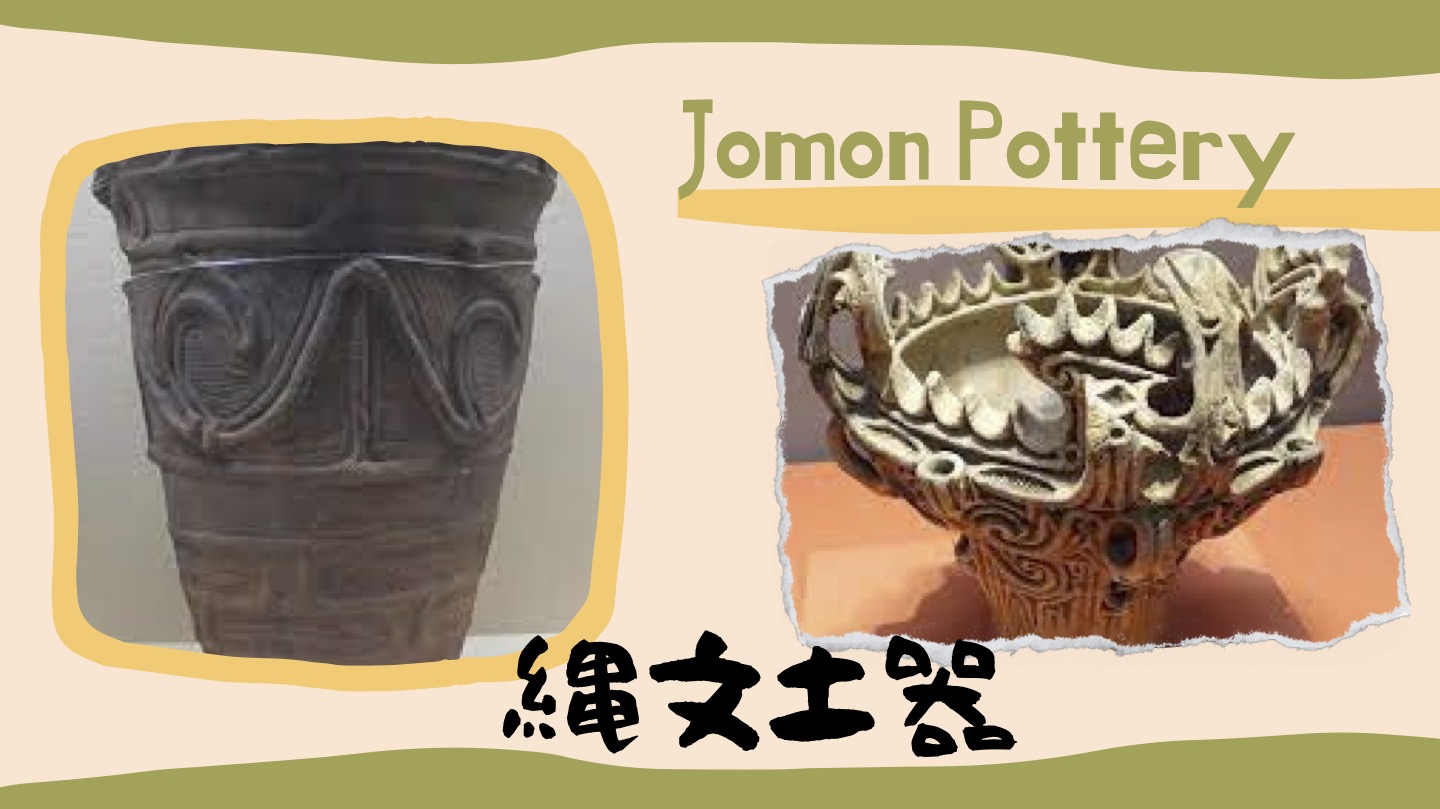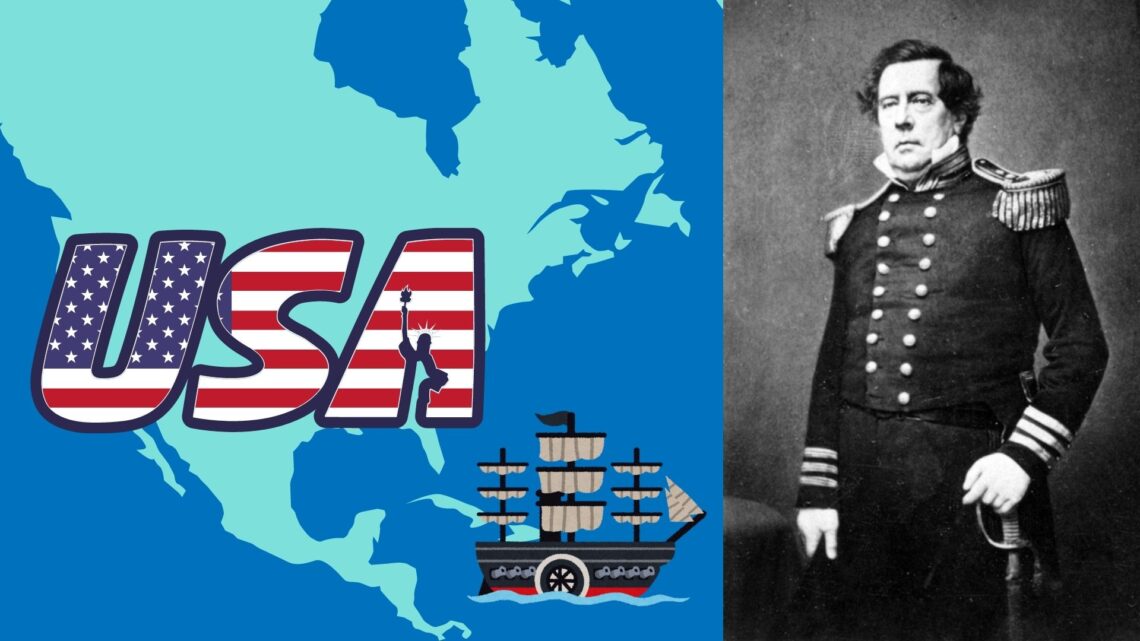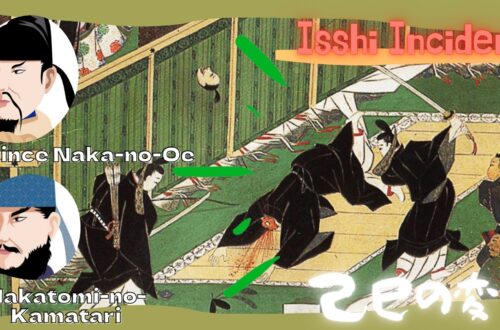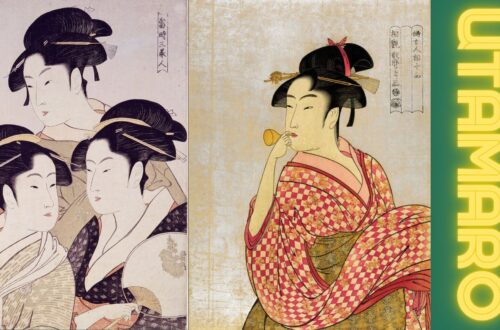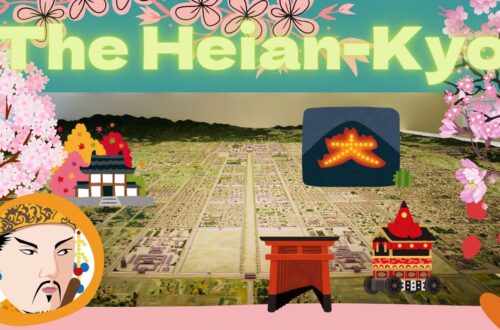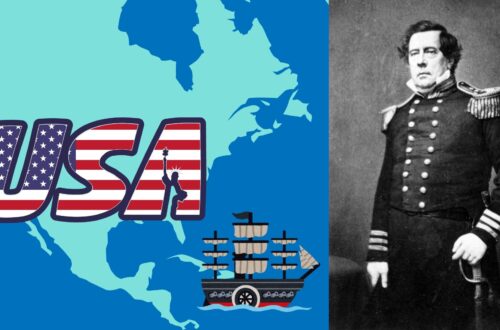01 Japanese History
A brief summary of Japanese history in 3 minutes. The videos are available on You Tube.
-
#34 Topple the Shogunate!
YouTube video of this episode is here! Japan in turmoil: In the 1860s, a force emerged to overthrow the Edo shogunate. Yokohama, with a population of about 3.7 million, is one of Japan’s leading international port cities. Once little more than a small fishing village, it was not until 1859 that it began its journey as a trading port with Europe and the United States. The main export was raw silk. Its export led to a shortage of domestic textiles, which led to a shortage of daily necessities. In addition, due to the difference in exchange rates, a large amount of domestic gold flowed out to Europe and the U.S.,…
-
#33 Commodore Perry
Here is my YouTube Video : Japanese History in 3 minutes #33 Commodore Perry On July 8, 1853, four black ships appeared at Uraga. The huge warships that appeared in Edo Bay wreaked havoc on the people of Edo. On board, the flagship, the frigate Susquehanna, was Matthew Calbraith Perry, the man who ended Japan’s isolationist policy that had lasted more than 200 years. Perry was born in Newport, Rhode Island in 1794, he joined the U.S. Navy at the age of 14. In 1852 he became Commander in Chief of the East India Squadron, carrying a letter from President Fillmore to Japan to make Japan a whaling port of…
-
#32 The Kasei Culture
Click here to go to YouTube Video of this episode 🙂 “Having as much of this serenity as possible, even though one knows little – nothing – for certain, is perhaps a better remedy for all diseases than all the things that are sold at the chemist’s shop.” In a letter to his sister, Vincent Van Gogh described the Japanese paintings as such. “Portrait of Père Tanguy” is one of the masterpieces by Van Gogh. Beloved by the artists of Montmartre in Paris, this art dealer’s background is painted with colorful Japanese paintings. “Japonism” greatly influenced many Western artists of the 19th century. From the latter half of the 18th…
-
#31 Financial Woes
Click here to go to the YouTube video The first American consul and minister to Japan, Mr.Townsend Harris described a small village near Shimoda in his journal in 1856. “Kakizaki is a small and poor fishing village, but the people are clean in person and civil in manner. You see none of the squalor which usually attends poverty in all parts of the world. Their houses are as clean as need be.” During the more than 200 years of isolation, Japan’s economy did not expand. Most people were poor except for a few wealthy merchants and feudal lords. Despite their poverty, people lived with cleanliness, courtesy, and a spirit of…
-
#30 The Dog Shogun
Click here to go to the YouTube Video In 1651, after the death of the third shogun, Tokugawa Iemitsu, a large-scale rebellion against the shogunate was discovered and shocked the Edo Shogun. The ringleader of the rebellion was Yui Shosetsu, a military scholar. At the time, Iemitsu’s strict government had led many samurais to become ronin, or samurai with no place to serve, and social unrest was spreading. Yui planned a coup d’etat with the support of the ronin. The plan was discovered by an anonymous tip and quickly suppressed. However, this incident triggered a change in the politics of the Shogunate. The Shogunate changed its previous coercive politics which…
-
#29 The Genroku Culture
Here is my YouTube video of this episode. By the second half of the 17th century, the political situation had stabilized. In Osaka and Kyoto, a new culture led by the townspeople developed. This is called the Genroku culture. Chikamatsu Monzaemon was a playwright of ningyo joruri. Ningyo joruri is a puppet play in which a tayu tells a story to the accompaniment of shamisen music. Monzaemon produced a number of hits, capturing people’s hearts with his depictions of men and women torn between duty and humanity. Matsuo Basho was a man who elevated haiku to the level of an art form. Haiku is a form of Japanese poetry with…
-
#28 Bushi in the Edo Era
Click here to go to the YouTube Video When you think of Japanese history, you probably think of the bushi, or the samurai warrior. What were they like during the Edo period ? According to data from the Ministry of Land, Infrastructure, Transport and Tourism, Japan’s population was approximately 32 million from the 18th century to the mid-19th century, or the end of the Edo period. The bushi population was 7% of the total population, so it was roughly 2.2 million. The vast majority of the Japanese population was peasantry. As the ruling class, the bushi had high status in the society. Among the bushi class, there was a strict…
-
#27 Four Contact Points
Click here to go to the YouTube video Throughout the Edo period, Japan was in a state of “sakoku”, or seclusion, with its doors mostly closed to foreign countries. However, Japan had four windows to the outside world. They were Nagasaki, Satsuma, Tsushima, and Ezo, which is present-day Hokkaido. Nagasaki was the most important of these. The Shogunate built an artificial island called “Dejima” in Nagasaki and established a Dutch trading post there. The Netherlands was the only Western country that was allowed to trade with Japan. This was because the Dutch promised not to proselytize Christianity. Access to Dejima was severely restricted, however, many scholars from various parts of…
-
#26 SAKOKU -exclusionism of the Edo shogunate-
Click here to go to YouTube video In his masterpiece “Moby-Dick, or The Whale” the 19th-century American author Herman Melville described Japan as a “double-bolted land”. This is because, in the Edo period (1603-1867), Japan was closed to the rest of the world for more than 200 years, keeping American whalers away. In this episode, we will look at how the exclusionism of the Edo shogunate began. At the beginning of the Edo period, Tokugawa Ieyasu was active in foreign trade. Merchant ships with Ieyasu’s permits were actively traveling to and from Thailand, Vietnam, and other Southeast Asian countries, and a number of Japanese towns were established in port cities…
-
#25 The Edo Shogunate
Click here to go to the YouTube Video As you know, the current capital of Japan is Tokyo. With a population of 14 million, Tokyo is a world-class metropolis and the political, economic, and cultural center of Japan. In this episode, we will look at how the Edo period (1603-1867) began, which triggered the development of Tokyo. ご存知のように東京は現在の日本の首都です。14,000,000 人の人口を持つ世界的な大都市で、日本の政治、経済、文化の中心です。今回は東京の発展のきっかけとなった江戸時代がどのように始まったのかを見ていきましょう。 After the death of Toyotomi Hideyoshi, Tokugawa Ieyasu, based in the Kanto region, rose to power and came into conflict with Ishida Mitsunari, who was trying to protect the Toyotomi regime. In 1600, the two sides clashed in the Battle of Sekigahara, which Ieyasu won. Then in 1603, the Imperial Court…
-
#24 The Momoyama Culture
Click here to go to the YouTube video A wealthy and powerful culture emerged in the war-torn country, reflecting the spirit of warring feudal lords and wealthy urban merchants. It is called the Momoyama Culture after the name of the area around Fushimi Castle, which Hideyoshi built in Kyoto. 戦国武将や裕福な豪商の気風を反映した豪華で力強い文化が、戦乱の世に現れました。秀吉が京都に建てた伏見城のあたりの地名から「桃山文化」と呼ばれています。 There are only 12 castles with a castle tower still in existence in Japan. Himeji Castle in Hyogo Prefecture, also called White Heron Castle because of its beautiful white exterior, is a good example. It was registered as a World Heritage site in 1993. 日本には現存の天守閣を持つ城は12しかありません。外壁の美しさから「白鷺城」とも呼ばれる兵庫県の姫路城はその代表です。1993年には世界遺産に登録されました。 The halls of these castles were decorated with gorgeously colored folding screens and “fusuma-e”, or…
-
#23 Hideyoshi, the man who unified the country
Click here to go to the YouTube video The Jesuit missionary Luis Frois, in his book “History of Japan,” described the man as follows. “He was short, of hideous appearance, and had six fingers on one hand. His eyes were protruding, and he had few whiskers like a Chinaman.” 宣教師のルイス・フロイスは著書『日本の歴史』の中でその男を次のように描きました。「彼は小さく見た目が醜悪で片手に6本の指がある。目は突き出ており中国人のように髭が薄い。」と。 The man was Toyotomi Hideyoshi, the man who ended the Sengoku Period and shaped Japan’s modern era. その男とは、戦国時代を終わらせ、日本の近世を形作った豊臣秀吉です。 Hideyoshi’s origins are not clear. He was of low birth. His original name was Kinoshita Tokichiro, and he later changed his name to Hashiba Hideyoshi. He rose to prominence and rose through the ranks after serving Oda Nobunaga. 秀吉の出自は明確ではありません。低い身分の出で、元の名を木下藤吉郎といい、後に羽柴秀吉と改名しました。織田信長に仕えてから頭角を表しました。 When Oda Nobunaga…
-
#22 NOBUNAGA, Charisma of Japanese history
Click here to go to the YouTube video In the late 16th century, a charismatic figure emerged in the Sengoku period. Oda Nobunaga. 16世紀の後半、戦国時代のカリスマが登場しました。織田信長です。 Oda Nobunaga was a feudal lord in the relatively small Owari region (present-day Aichi Prefecture). When he was young, he was called an “Idiot”. He was regarded as an eccentric who lacked common sense. 織田信長は比較的小さな尾張(現在の愛知県)の戦国大名です。若い頃は「うつけもの」と呼ばれ、常識のない変わり者と思われていたようです。 It was at the Battle of Okehazama that Nobunaga made his name known throughout Japan. He used his superior strategy to defeat Imagawa Yoshimoto of Suruga (Shizuoka Prefecture) with only a small force. Nobunaga then entered Kyoto in 1573, ousted the Shogun, and destroyed the Muromachi Shogunate. 信長がその名を世に知らしめたのが桶狭間の戦いでした。彼は卓越した戦術によって少ない兵力で駿河(静岡県)の今川義元を打ち破ったのです。信長はその後1573年に京へ上り、将軍を追い出して室町幕府を滅亡させました。 Nobunaga’s name was…
-
#21 Guns n’ Jesus
Click here to go to the YouTube video Europeans came to Japan in the 16th century. The encounters had a great impact on the subsequent history of Japan. 16世紀、ヨーロッパ人が日本にやってきました。その出会いはその後の日本の歴史に大きな影響を与えました。 In August 1543, a Chinese ship carrying about 100 people drifted ashore at Tanegashima island. Among the passengers were two Portuguese, Francisco and Motta. 1543年8月、およそ100人を乗せた中国船が種子島に漂着しました。その中にフランシスコとモッタという二人のポルトガル人が乗っていました。 Tanegashima Tokitaka, then 16 years old and the lord of Tanegashima Island, was amazed at the power of the guns owned by the Portuguese and bought two guns for 200 Ryo. Although it is difficult to convert to the current monetary value, it is thought to be at least 100,000 U.S.dollars today. 当時16歳だった島主の種子島時尭はポルトガル人が持っていた銃の威力に大いに感心し2丁の銃を200両で買いました。貨幣価値を換算するのは簡単ではありませんが、少なく見積もっても今日の10万ドルほど(ざっと1000万円くらい)と考えられています。 Tokitaka ordered his…
-
#20 The Muromachi Culture
Click here to go to the YouTube video In this episode, we will look at the culture of the Muromachi period. 今回は室町時代の文化を見ていきましょう。 Since the shogunate was located in Kyoto, the shogun and other warriors became familiar with the culture of the court nobles. 幕府が京都に置かれたことから、将軍や武家たちは貴族の文化に親しむようになりました。 Kinkaku, or the Golden Pavilion built by Ashikaga Yoshimitsu in Kitayama, Kyoto, is a symbolic building that blends the cultures of the nobles and the samurai. 足利義満によって京都の北山に建てられた金閣は、公家の文化と武家の文化が融合した象徴的な建物です。 Noh is a performing art that was largely developed by Kan’ami and Zeami, who were supported by Yoshimitsu. Zeami wrote “Fushikaden”, or “Flowering Spirit,” a theoretical book on Noh. 能は、義満の保護を受けた観阿弥と世阿弥が大成した舞台芸術です。世阿弥は能の理論書である『風姿花伝』を著しました。 Kyogen, a comedy, was performed between the acts of…



